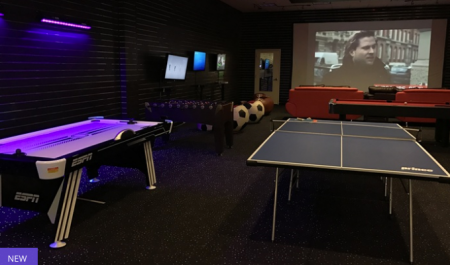

Today’s Groupon Las Vegas Daily Deal of the Day: Animal Rides of America: $8 for All-Day Game Center Passes and Drinks for One, $16 for Two, or $30 for Four People (Up to 53% Off)
Buy now for only $
8
Value $15.85
Discount 50% Off
What You’ll Get
Choice of: - All-Day Game Center Pass and One Drink for One Person
- All-Day Game Center Passes and Two Drinks for Two People
- All-Day Game Center Passes and Four Drinks for Four People
This is a limited time offer while quantities last so don’t miss out!
Click here to buy now or for more info about the deal.
Click here to view our Buffet & Dining Deals page for all the top restaurant deals in Vegas.
The Fine Print
Promotional value expires 120 days after purchase. Amount paid never expires. May be repurchased every 30 days. Limit 1 per person, may buy 1 additional as gift. Limit 1 per visit. All goods or services must be used by the same person. Tax not included. Merchant is solely responsible to purchasers for the care and quality of the advertised goods and services.
Animal Rides of America
https://www.facebook.com/animalrideslv/
3528 South Maryland Parkway
Suite 306
Las Vegas, NV 89169
Inside Arcade Machines: The Guts of Gaming
Arcade cabinets pack a lot of features into their sleek wooden frames. Read on as Groupon uncovers the parts within a typical machine.
Classic arcade games are synonymous with the iconic cabinet, that softly glowing box that entices gamers with promises of high scores and grateful princesses. Despite their size, cabinets are largely empty inside, designed to house just a handful of key components. Here’s a rundown of the most-important parts:
Circuit board: Typically strapped to the side of the interior, the circuit board is what allows an arcade machine to actually boot up and run a game. Early on, manufacturers built games directly into the circuitry of their arcade boards, which saved money on manufacturing costs but also made games more expensive, as arcade owners would have to purchase a complete unit to get a new game. Eventually, companies designed circuit boards separate from games, allowing owners to simply swap out the game data in a manner similar to home consoles.
Coin mech: Different cabinets might use any variety of designs for the coin mechanism, but its purpose is always the same: verify if a coin is legitimate and, if so, turn it into a game credit. Whether it’s an arcade token or a US quarter, each coin has to pass two tests. First, a counterbalanced cradle tests the weight and shape against a presettable standard. After that, the coin then moves on to a small magnet, which makes sure it’s composed of the right metal. At either stage, any coin that doesn’t meet the criterion simply passes through to the coin-return slot. If all’s well, however, the coin falls through to the collection bin, triggering the credit counter on its way down.
Monitor: Most vintage arcade machines contain CRT monitors, similar to standard “picture-tube” TVs. Since TVs are rectangles, not squares, the monitor may be aligned vertically or horizontally depending on the game. The endless ladders and elevators of Donkey Kong, for instance, require a vertical orientation, whereas NBA Jam stretched its frenzied court across a horizontal screen. The speaker usually sits just above the monitor, facing down toward the player so they can discern the game’s beeps and boops from the cantina’s drunken droids.
Control panel, marquee, and stickers: Just as some circuit boards can accommodate multiple games, cabinet features are interchangeable. Lit from behind by a fluorescent bulb, the removable marquee at the top ranges from plexiglass to plastic to solid glass. The detailed artwork on the sides of cabinets may look like permanent tattoos, but they’re actually simple adhesives. Even the control panel—the assembly of joysticks and buttons often unique to each game—can lift right off to make way for a new array.
Click here to buy now or for more information about the deal. Don’t miss out!

 Las Vegas: Top Buffet & Dining Deals
Las Vegas: Top Buffet & Dining Deals  Las Vegas Top 10 Best Buffets
Las Vegas Top 10 Best Buffets  Buffet of Buffets: 2 FREE Buffet Passes with 2 Night Hotel Purchase
Buffet of Buffets: 2 FREE Buffet Passes with 2 Night Hotel Purchase  Las Vegas: Top Show Deals, Promos & Coupons
Las Vegas: Top Show Deals, Promos & Coupons  Minus 5 Ice Bar: $17 for Ice-Bar Experience for Two (50% Off)
Minus 5 Ice Bar: $17 for Ice-Bar Experience for Two (50% Off)  myVEGAS Slots Facebook Game: Get Real Rewards & Win Free Comps in Las Vegas
myVEGAS Slots Facebook Game: Get Real Rewards & Win Free Comps in Las Vegas  Eiffel Tower Ride in Paris Las Vegas: 2-for-1 Ticket Coupon!
Eiffel Tower Ride in Paris Las Vegas: 2-for-1 Ticket Coupon! 









